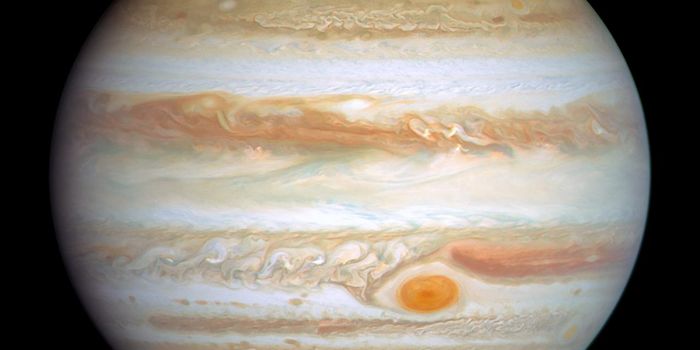Do Magnetic Fields Influence Supermassive Black Hole Activity?
Black holes have long captivated some of the most brilliant minds in astrophysics, and despite all the space telescope observations astronomers have made of these invisible objects devouring galactic matter, we still know astonishingly little about them.
Astronomers understand that supermassive black holes lurk at the center of most galaxies, but we still have many questions concerning their nature. One of the most pressing of all is why some black holes are so actively munching on their surroundings while others remain dormant.
Image Credit: NSF/NRAO/AUI/VLA
Recent observations made with the Stratospheric Observatory for Infrared Astronomy (SOFIA) are bringing astronomers one step closer to solving this mystery. The results of these novel observations have been published this week in the journal The Astrophysical Journal Letters.
The paper reveals how an influential group of magnetic fields trap dust and other particulates in a thick ring around a supermassive black hole at the center of the galaxy Cygnus A. This ring, known to astronomers as a torus, resides close enough to the supermassive black hole to feed it with matter continuously.
Related: A star ran away from a black hole, leaving a part of its light behind
The astronomers reached this conclusion after exploiting the infrared sensitivity of SOFIA’s High-resolution Airborne Wideband Camera-plus (HAWC+). As it would seem, the instrument detected an infrared signature emitted by the dust particulates swirling around at Cygnus A’s center.
The supermassive black hole residing there is thought to be a somewhat active specimen when compared with others. That said, the findings have implications for what it takes to make one supermassive black hole more active than the next.
"It's always exciting to discover something completely new," explained study lead author Enrique Lopez-Rodriguez. "These observations from HAWC+ are unique. They show us how infrared polarization can contribute to the study of galaxies."
Related: Astronomers spy a supermassive black hole at the center of an ultracompact dwarf galaxy
Cygnus A is the closest-known active galaxy to the Milky Way, making it an easy target for astronomers to observe. The findings of this study are almost certain to spur additional interest in the field; perhaps follow-up studies will validate the results and discern whether magnetic fields influence supermassive black hole activity in other comparable galaxies.
It should be fascinating to see how our knowledge of black holes evolves with the help of this newfangled knowledge.
Source: NASA, The Astrophysical Journal Letters









